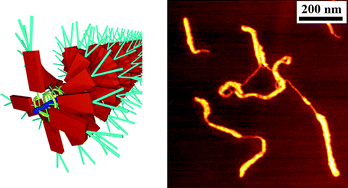Influence of π–π stacking on the self-assembly and coiling of multi-chromophoric polymers based on perylenebis(dicarboximides): an AFM study†
Abstract
The

* Corresponding authors
a
Instituto per la Sintesi Organica e la Fotoreattività, Consiglio Nazional delle Ricerche, Via Gobetti 101, Bologna, Italy
E-mail:
palermo@isof.cnr.it
b
Institute for Molecules and Materials, Radboud University Nijmegen, Heyendaalseweg 135, Nijmegen, The Netherlands
E-mail:
a.rowan@science.ru.nl
c
Max-Planck Institute for Polymer Research, Ackermann 10, Mainz, Germany
E-mail:
muellen@mpip-mainz.mpg.de
d
Nanochemistry Laboratory, ISIS, Université de Strasbourg and CNRS (UMR 7006), 8 allée Gaspard Monge, Strasbourg, France
E-mail:
samori@isis-ulp.org
The

 Please wait while we load your content...
Something went wrong. Try again?
Please wait while we load your content...
Something went wrong. Try again?
V. Palermo, E. Schwartz, A. Liscio, M. B. J. Otten, K. Müllen, R. J. M. Nolte, A. E. Rowan and P. Samorì, Soft Matter, 2009, 5, 4680 DOI: 10.1039/B912302D
To request permission to reproduce material from this article, please go to the Copyright Clearance Center request page.
If you are an author contributing to an RSC publication, you do not need to request permission provided correct acknowledgement is given.
If you are the author of this article, you do not need to request permission to reproduce figures and diagrams provided correct acknowledgement is given. If you want to reproduce the whole article in a third-party publication (excluding your thesis/dissertation for which permission is not required) please go to the Copyright Clearance Center request page.
Read more about how to correctly acknowledge RSC content.
 Fetching data from CrossRef.
Fetching data from CrossRef.
This may take some time to load.
Loading related content
